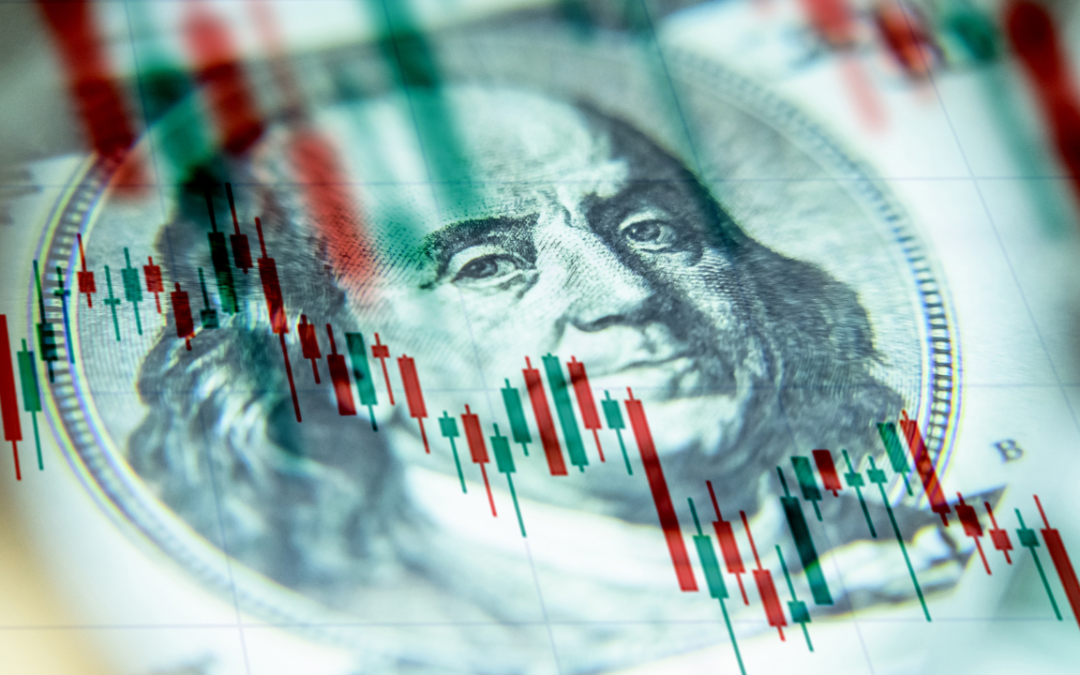Alongside the US Memorial Day holiday, we explore the latest high frequency indicators of global economic activity. Our aim is to provide a snapshot of the collapse in economic activity, and also to see whether and where a bottom may be forming. We conclude with a few observations about what this means for global economic activity, corporate results, market valuations and broad investment strategy.
As a reminder, high frequency data (sometimes called flash estimates) bring together a range of indicators to give timely measures of economic activity. We can divide indicators into three camps: (i) those still contracting; (ii) those showing signs of stabilizing at lower levels of activity and; (iii) those evidencing recovery. Differences in outcomes may reflect lags in data reporting, more traditional leads and lags in economic activity, and parts of the economy more prone to pandemic-related weakness or, alternatively, early beneficiaries of policy stimulus or relaxation of stay-at-home orders. For each indicator, we offer a brief explanation of what we think is driving the outcome.
The following set of data points is not comprehensive, but we feel is indicative of how economies are doing at present.
No bottom in sight
The following indicators show little or no evidence of reversing the sharp contraction of economic activity that began earlier this year:
- US jobless claims: While the rate of new claims filed has clearly slowed, the total number of Americans filing for first-time unemployment benefits continues to climb, with over 38 million new filers since the pandemic’s outbreak. The US rate of unemployment likely jumped to over 20% of the labor force in May. Employment statistics in the Eurozone similarly show no signs of stabilization, much less improvement. In both cases, joblessness numbers continue to rise.
- US oil rig count: US energy output, as measured by rig counts, continues to decline (latest week saw the rig count fall to 237 from 258—the 2020 high was 683 rigs in March). Recent recoveries in crude oil and refined product prices could herald a stabilization of production, but typically rig counts lag by several quarters any supply/demand shifts and their impact on energy prices.
- Capacity utilization/Industrial production: Recently released US and Japanese figures on manufacturing capacity utilization continue to evidence falling factory output. The same is true for Eurozone industrial production. Capacity utilization and IP typically lag changes in manufacturing surveys, which usually reveal inflection points sooner. The various purchasing manager index data will bear close watching for early signs of stabilization of goods output.
- Pandemic measures: Globally, infections, hospitalizations and Covid-19 deaths continue to rise. Rates of new cases have fallen to negligible amounts in New Zealand and Australia and are at much-reduced numbers in China, South Korea, Italy, Germany and France. Outside of New York, US infection rates continue to climb (spreading at epidemic rates in 24 states) and epidemiologists warn of increased rates of infection where social distancing is relaxed prematurely or too aggressively. In parts of Latin America and Africa, pandemic rates have recently accelerated; Brazil now has the second largest count of infections worldwide.
- New York Fed Weekly Economic Index (WEI): The New York Federal Reserve WEI had been showing signs of bottoming, but it the latest reading (May 16) ticked down to its lowest post-Covid-19 level of -11.09. According to the NY Fed, the index was dragged lower by decreases in fuel sales and electricity output.
- Housing/Construction: Euro-Area construction, NAHB US homebuilder, US building permits and US existing home sales continue to fall, with no sign yet of bottoming.
- US rail freight traffic: Freight movement by rail in the US may be bottoming. Energy transportation appears to be a drag on the overall numbers, given weak final demand related to diminished energy usage for transportation, manufacturing and commercial use.
Bottoming
The following indicators point to a bottoming process, consistent with stabilization of activity at much lower levels.
- Discretionary travel/entertainment: TSA checkpoint data indicate an end to the collapse in US air travel, but overall levels remain depressed with few signs of meaningful recovery. Hotel occupancy rates have also stopped declining, albeit at extremely low levels. US cinema box office receipts languish at the levels to which they collapsed when most theaters were shuttered. In these select categories, activity fell to some of the lowest levels imaginable. Hence, any ‘bottoming process’ may be as much arithmetic as economic. Restaurant bookings have also bottomed but are likely to show some recovery in the coming weeks as social distancing norms and regulations are relaxed in much of the US and Europe. Importantly, that will also lead to some recovery of related services employment.
- Consumption: High frequency US consumer data (e.g., Redbook store sales) and consumer sentiment surveys suggest that the sharp pullback in spending in March/April has reached a floor, with a possible uptick to follow as establishments are re-opened (online sales have, of course, surged during the pandemic). Pent up demand is likely to be an important driver of any early recovery in spending, though economists will watch for signs of borrowing as an indication as to whether spending is only temporarily rising or may be recovering more sustainably.
Signs of recovery
The following indicators point to some recovery already underway:
- Oil & gasoline prices: Typically, price changes lag economic activity, but given the unprecedented collapse of (US) crude oil prices last month, it is now notable that West Texas Intermediate, Brent and most refinery output prices have recovered. To some extent, that may reflect pick-up in demand, though supply restraint (falling US rig counts, Saudi/Russian discipline) is probably playing the major contributing role.
- Mobility trackers: Various ‘mobility trackers’ (Apple, Google) are suggesting that more Americans are driving and visiting destinations previously shunned as Covid-19 infections soared. Such data corroborate anecdotal evidence that some workers are re-engaging in ways suppressed while strict stay-at-home orders were in place.
- Mortgage applications: US mortgage applications for home purchases have picked up to levels last seen in late February/early March, perhaps one of the most encouraging signs of recovery, as large purchase commitments are typically postponed during periods of extreme uncertainty. For qualified buyers, US mortgage rates are at historic lows.
- New business formation: Applications to form US businesses are bouncing off their pandemic lows. To some extent, however, that may reflect surging self-employment, which typically picks up when jobs are lost, augmented by the ease of joining the ‘gig economy’. In that sense, business formation could merely reflect weak job prospects, rather than optimism about future economic developments. And the rate of failures of new businesses is high, with over 20% closing in their first year in the best of circumstances.
Overall assessment & implications
As new infection rates fall in many developed and some emerging economies, political, economic and social pressure to relax lockdowns, stay-at-home orders and social distancing is building. The relaxation of economic restrictions differs, of course, by jurisdiction.
It is therefore unsurprising to see early signs of stabilization and recovery across various economic dimensions. Indicators of social mobility (traffic and local travel) already evidence changing patterns of behavior. ‘Bricks and mortar’ spending is likely to be a beneficiary, as are selected services (e.g., dining away from home). Employment indicators in those sectors will probably slow their rate of deterioration, or even begin to recover.
Other areas of the economy will lag. Discretionary travel (including air travel) will take longer to recover. Urban areas may continue to see lower rates of office and hotel occupancy. Public transportation is also likely to see slower rates of recovery.
At the broader macroeconomic level, key areas of restraint merit close watching. How quickly will employers re-hire? Will households desire higher levels of precautionary savings against the risk of repeat waves of infection or as a result of employment insecurity? How long will it take before capital spending picks up? Will fiscal stimulus and transfer payments dry up as governments sense the worst of the crisis may be over? Will recent relaxation of social mobility constraints result in fresh Covid-19 outbreaks that could undermine any recovery in consumer confidence and throw the economy back into a deeper contraction?
For the most part, these broader questions cannot yet be answered. Relevant history offers few, if any, parallels to draw upon. Medical science cautions that fresh outbreaks should be expected, given still low overall rates of infection in the general population and uncertainty about whether exposure confers immunity.
What is the bottom line?
In all probability, economic data will improve in the coming weeks as a result of slowing infection rates and greater social mobility. Yet financial markets have discounted some improvement already (e.g. overall equity index advances, the recovery of energy prices, etc.), even if investors have not been broadly enthusiastic (safe, large, long-term growth companies continue to significantly outperform more cyclical and value-oriented companies).
For investors, the critical question is whether to stay the course by holding safe growth and quality stocks, take profits in expectation that recurring Covid-19 spikes will stunt recovery, or to rotate into cyclical and value stocks in the expectation that improving data will boost investor sentiment towards the market laggards?
We don’t profess unique insights. Science is cautionary, while near-term market and political momentum is more hopeful. Yet much of that optimism rests, it appears, on incomplete and imperfect data, recurring hopes for a rapid development of effective vaccines, and successful flattening of infection rates in hard-hit communities. Optimistic thinking has fewer genuine foundations in data and science, which ought to be worrisome. In particular, we remain concerned that renewed waves of infection will cast a pall over hopes and desires for normalization, which ultimately underpin economic recovery, corporate fundamentals and prevailing asset prices.



